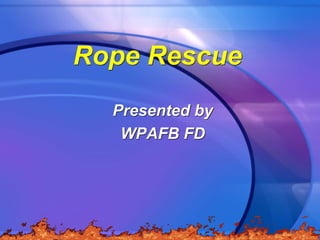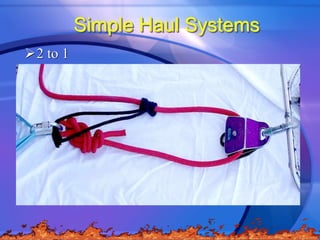This document provides an overview of rope rescue techniques presented by the WPAFB FD. It discusses rope types, knots, anchoring, mechanical advantage systems, and basket operations. Static and dynamic ropes are described along with their strengths and uses. Common rescue knots like the figure eight, clove hitch, and bowline are demonstrated. Proper rope inspection, care, and retirement are covered. Anchoring techniques like pickets and critical angles are explained. Mechanical advantage systems like Z-rigs, block and tackles, and their uses are summarized. Stokes basket operations including packaging and lowering a patient are outlined. Considerations for trauma patients involving blunt force injuries and falls are presented. Personal protective equipment and safety protocols for
















































